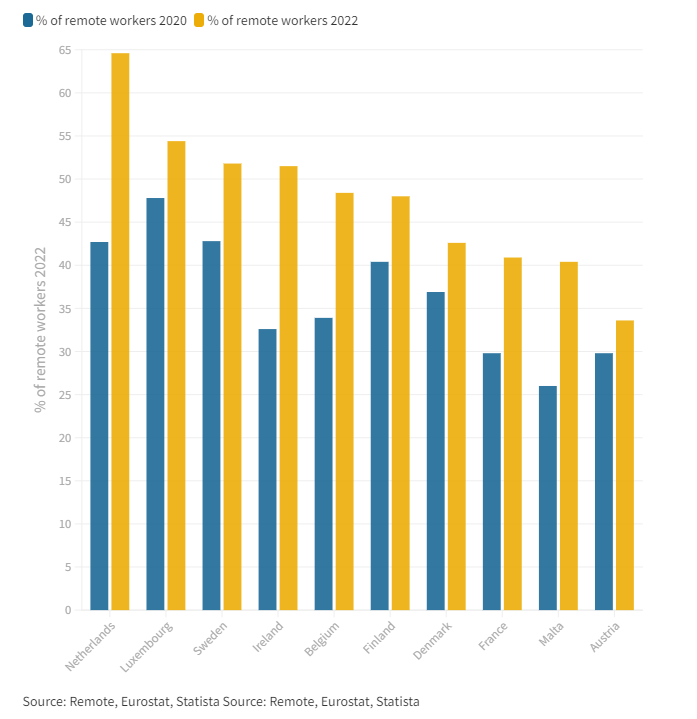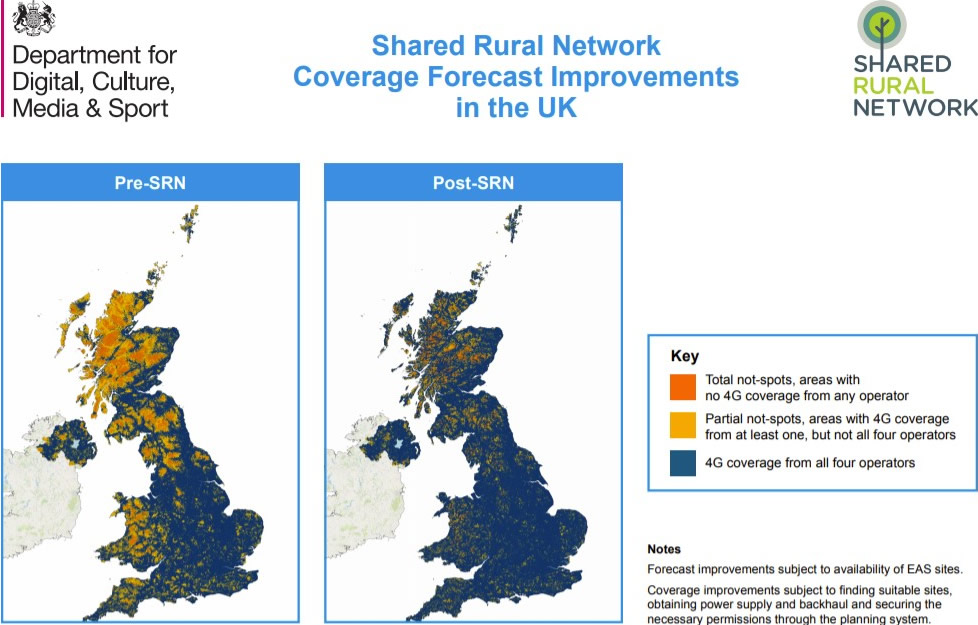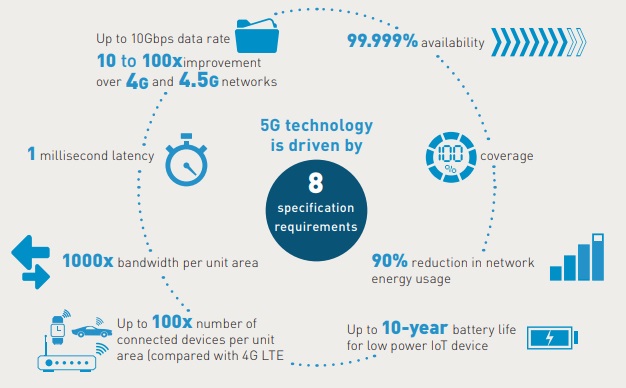
The catalyst of change in business mobile technology
Take a minute and try to Google “most important inventions of the 21st century”.
I can guarantee that in every single article you click on, some version of ‘smartphones’, ‘mobile operating systems’, ‘mobile contract’, or even 3G, 4G, and most recently 5G, will come up.
When Google purchased Android in 2005 (two years before the first iPhone and iOS were even launched!), we had no idea how important mobile technology would become to our lives. There has been no aspect of our day-to-day that the evolution of mobile technology hasn’t profoundly changed.
With 5G deemed revolutionary business mobile service technology, we can expect our lives to positively change once more.
Speaking of change – when in 2020 the COVID-19 pandemic hit, all non-essential businesses had to close their offices and transition to mobile working. Employees suddenly had to face the fact that, while working from home, their broadband was simply unsuitable to withstand many different people home working, homeschooling, or simply watching Netflix at the same time. It became a challenge to stay connected.
Mobile came once again to the rescue, with remote workers choosing to use their mobile network instead of their home one to get their work done.
It’s pretty clear that mobile technology is fundamental to our professional lives, as well as our personal ones. Yet, many businesses still fail to unlock its full potential – too often relying on consumer-grade services that fail their employees and hinder their success.
Mobile working is the new granola
In these times of uncertainty, one thing is certain: mobile, or hybrid, working is here to stay.
Or at least some form of it. In the next few years, we’ll see many businesses opt for a hybrid model, giving employees the choice to work from wherever they prefer. Not the least because they demand it: 77% of employees would prefer a mix of office-based and remote working, and almost 80% want more flexibility in how and where they work.
But that’s easier said than done, especially without the right technology and processes to support such a shift.
Since the beginning of the pandemic, many people have had to deal with unstable broadband connections, which not only compromised their productivity but also increased their stress levels.
As a matter of fact, a recent YouGov survey found that 36% of Brits working from home regularly switch to their mobile network to stay online – with 61% saying it’s made the working experience better.
With remote working becoming more common, firms will need to take into account how their business mobile services can support their remote employees’ communications and data speed.
The labour market is particularly stratified according to income and age when it comes to WFH or hybrid working.
86% of employees identify their employer as the most responsible for ensuring a better working world after the pandemic – providing reliable mobile connectivity will also be down to the employer, and its impact on the workforce shouldn’t be underestimated.
Employees using their mobile devices for work experience 34% increase in productivity, while 39% said that their business smartphone improved the quality of collaboration in the workplace.
No matter what the future holds (and we can imagine it will feature a lot of people working away from the office), the latest mobile technology will be fundamental to any business hoping to succeed.
The big exodus
2020 wasn’t just the year of the pandemic and remote working, it was also the year that Brits rediscovered the wonders of the countryside.
With businesses allowing employees to work from wherever they prefer, many people chose to leave the city for greener pastures (quite literally) and moved to some of the most rural areas of the country.
Just in June and July 2020, Rightmove reported a 126% increase in people considering properties in village locations.
Added to this is the move to make working from home a legal right across a number of countries.


Despite an overall return to the office since the pandemic, people still strongly rely on mobile data for work and personal life – so much so that 67% of those working from home agreed that access to mobile data is an important factor when choosing where to live.
This poses two challenges to businesses:
- How to provide mobile connectivity to home workers living in rural areas
- How to provide it to those often on the road to get to the office from those same rural areas
With the benefits of mobile technology in business now clearly defined, the last thing you’d want is to miss out because your remote workers don’t have access to a stable mobile connection.
Enter the Shared Rural Network (SRN) – a project every business should be aware of.
The SRN, developed by the UK Government and the UK’s four mobile network operators, will deliver 4G coverage to 95% of the UK, enabling rural businesses and communities to stay connected, wherever they are located.


EE, O2, Three and Vodafone expect to provide mobile coverage to an additional 280,000 premises and for people in cars on an additional 16,000km of the UK’s roads.
This project creates an excellent opportunity for businesses to reap the many benefits of mobile working without worrying about disruption to their business, mobile services, or employee productivity.
What’s the deal with 5G?
Let’s address the elephant in the room – 5G.
It’s been long-awaited, much-debated but also much acclaimed, and at last, it’s finally here. Yet, too many businesses are not taking advantage of this innovative technology – and the advantages will be quite substantial for those who move quickly.
While awareness of 5G is reasonably high (especially due to all the talk in the press), only 9% of businesses are planning to allocate significant resources to benefit from its imminent rollout.
Looking back at the benefits of early 4G business mobile plan adopters, it’s safe to assume those same benefits would apply to those thinking of adopting 5G technology nice and early. In fact, a study by management consultancy Arthur D. Little and EE revealed that 86% of early 4G adopted got ‘more work done on the move’, whilst 76% said it had helped their organisations‘ innovate and jump the competition’.


For a more practical example, let’s go back to the mobile working trend we’ve talked about before: your employees are working remotely and are struggling to communicate, or to transfer and receive business-critical data.
With 5G, businesses can equip employees with the fastest data throughput and lowest latency technology they could ask for, without the need to be in the office nor to wait for lines to be installed. As a matter of fact, 5G can be four times faster than the UK average fixed broadband speeds.
In simpler terms, 5G allows for clearer video calls, better communication, faster data processing, improved application performance and faster deployment. That sounds like an improved business mobile phone service to us.
VoLTE
VoLTE is more or less what it says on the tin: it allows users to have calls over the 4G LTE network. With VoLTE, the call quality is much superior to 3G connections, and its spectrum level has far greater reach – meaning indoors and rural areas coverage is generally better.
Ever had to move closer to a window to get better reception?
There are two reasons for that: the UK uses denser construction materials than most other countries, which it’s harder for your cell signal to penetrate through your house’s walls, and mobile networks generally have less bandwidth at lower spectrum levels, which is the one needed to get through walls.
VoLTE uses lower frequency spectrum levels to ensure enhanced indoor coverage, and some mobile operators, such as Three, are investing greatly in their low-frequency spectrum to improve this challenge.
VoWiFi
But if you’re still having connectivity issues, then let me introduce you to VoWiFi.
VoWiFi uses your Wi-Fi network to make and receive calls and texts – in addition to using VoLTE where possible. VoWiFi can use any Wi-Fi connection, both public and private, and it doesn’t require any additional downloads or apps. There are no extra charges for using VoWiFi, all calls come out of your usual mobile allowance.
Before you ask – 5G can’t be of much help with indoor coverage as it makes greater use of the high-frequency spectrum than 4G does. However, because of its high capacity spectrum, it enables a much greater number of devices in any area to operate simultaneously without disruption – great news for those in big cities.
Getting a mobile service that does it all
Being contactable and able to work as normal when you are mobile is key to doing business well, which means that having the best business mobile phone service possible is paramount.
With mobile working here to stay, and to some extent still on the rise, the mobile service you choose for your business will determine your business success.
As millennials and Gen-Z stream into the world of work, the expectation for flexible and mobile working will increase and so should your investments in mobile technology.
It’s important to consider all the present and future features you need to empower your employees, wherever they are. From 5G, to better rural areas coverage and VoLTE – your business needs to choose a mobile service that does it all.
Unfortunately, traditionally businesses have been hamstrung by limited access to good value, reliable mobile services, often having to rely on products initially created for the consumer market.
Conclusion
With so many opportunities presented by mobile technologies, your organisation should rely on a service that has been purely created for the business market – with technologies and features designed to ensure enhanced business productivity.
Equipping employees with a phone is no longer enough if they can’t take advantage of better call quality, data transfers, and improved application performance.
With mobile devices boosting worker productivity and saving employees two hours per day on average, companies can win big with the right mobile service.
But better mobile service doesn’t just mean increased productivity and connectivity for your employees.
It can also be a catalyst for competitive advantage gained through superior operational efficiency.
For example, 5G can help you process data faster from a variety of devices, including Internet of Things (IoT) technology – data that can provide you with valuable insights to provide a better customer experience and increased productivity. Helping all parties to stay connected.
Finally, you should also consider a mobile service that can easily integrate with your fixed-line infrastructure to become the key form of communication in unexpected events that keep you away from the office, such as snow, floods, roadworks, or you know, a global pandemic.
Check out Virtual Firsts solutions or get in touch to implement all your needs in business mobile technology.
